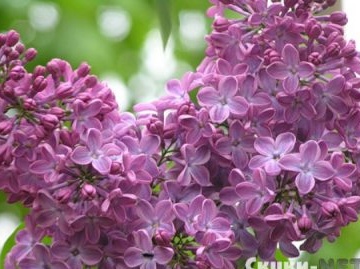Lilac is endowed with many talents. Besides the fact that she is extremely beautiful, fragrant, healing, she, let's say, knows how to ... sing. No tree creates such a gentle melody. People have known about this for a long time. And so the shepherdesses made flute from lilacs and won beautiful melodies on them. With her melodious singing, the lilac spoke a lot about itself, but many secrets remained.
According to legend, lilac flowers bring happiness, especially when they have an unpaired number of petals. People put them in their mouths and kept them under their tongues for a while to be happy. A happy person is a person who has nothing to hurt. Those. - healthy. And lilac flowers really know how to quench pain, even as unbearable as a tooth. To do this, it is enough to put a drop of flower juice on a tooth that hurts, and the pain will quickly pass. But just a drop cocktails at home no need to cook from lilacs.
People noticed anesthetizing, antispasmodic, anti-inflammatory, antipyretic properties of lilacs for a long time and began to actively use the plant. Not only lilac flowers are endowed with healing properties - leaflets, stems, and bark can also heal.
For treatment, both freshly picked and dried leaves and lilac flowers were used. But, in no case did not mix them together both during storage and in treatment. Each part must be used separately, since different compositions have their own application.
For example, barley was treated with lilac leaves, and a decoction of lilac flowers was treated as a beautiful tonic and diuretic. However, various useful recipes have been popularly known since ancient times.
Decoctions of dried flowers and leaves are made according to the same recipe as fresh ones. They can gargle and apply as compresses to places that hurt.
In case of severe cough, bronchitis, bronchial asthma, an infusion of dried lilac flowers was used. At the same time, this infusion acted as a diaphoretic and antimalarial drug (but I remind you that children saw at a teaspoon, and adults - at a tablespoon of infusion three times a day).
It has long been noticed: after a long stay near the lilac, some people begin to have a headache, even spasms of the coronary vessels, blood pressure rises. This is because lilac flowers contain, albeit in small amounts, prussic acid. However, the paradox is that it is the presence of this acid that makes the lilac healing. But even its nectar (this is a melliferous plant) hides so deeply that not always a bee can get it.Perhaps this is what nature intended so that lilac nectar gets into honey as little as possible. Since, through the presence of hydrocyanic acid, lilac is considered a poisonous plant.

